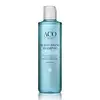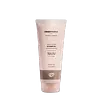What's inside
What's inside
 Key Ingredients
Key Ingredients

 Benefits
Benefits

 Concerns
Concerns

 Ingredients Side-by-side
Ingredients Side-by-side

Water
Skin ConditioningCocamidopropyl Betaine
CleansingSodium Methyl Cocoyl Taurate
CleansingSodium Lauroyl Methyl Isethionate
CleansingGlycerin
HumectantDecyl Glucoside
CleansingSodium Chloride
MaskingPanthenol
Skin ConditioningArginine
MaskingAllantoin
Skin ConditioningNiacinamide
SmoothingPyridoxine Hcl
Skin ConditioningSodium Ascorbyl Phosphate
AntioxidantTocopheryl Acetate
AntioxidantCalcium Pantothenate
Potassium Laureth-4 Carboxylate
Polyquaternium-22
PEG-150 Pentaerythrityl Tetrastearate
EmulsifyingSodium Gluconate
Skin ConditioningC12-13 Pareth-9
EmulsifyingPEG-120 Methyl Glucose Trioleate
CleansingDicaprylyl Ether
EmollientCoconut Acid
CleansingPEG-6 Caprylic/Capric Glycerides
EmulsifyingGlyceryl Oleate
EmollientTrisodium Ethylenediamine Disuccinate
Sodium Starch Octenylsuccinate
AbsorbentPropanediol
SolventMaltodextrin
AbsorbentOryza Sativa Seed Protein
AntioxidantOryza Sativa Extract
AbsorbentSodium Citrate
BufferingPhytic Acid
Gluconolactone
Skin ConditioningSilica
AbrasiveCalcium Gluconate
HumectantCitric Acid
BufferingSodium Benzoate
MaskingPhenoxyethanol
PreservativeBenzoic Acid
MaskingParfum
MaskingWater, Cocamidopropyl Betaine, Sodium Methyl Cocoyl Taurate, Sodium Lauroyl Methyl Isethionate, Glycerin, Decyl Glucoside, Sodium Chloride, Panthenol, Arginine, Allantoin, Niacinamide, Pyridoxine Hcl, Sodium Ascorbyl Phosphate, Tocopheryl Acetate, Calcium Pantothenate, Potassium Laureth-4 Carboxylate, Polyquaternium-22, PEG-150 Pentaerythrityl Tetrastearate, Sodium Gluconate, C12-13 Pareth-9, PEG-120 Methyl Glucose Trioleate, Dicaprylyl Ether, Coconut Acid, PEG-6 Caprylic/Capric Glycerides, Glyceryl Oleate, Trisodium Ethylenediamine Disuccinate, Sodium Starch Octenylsuccinate, Propanediol, Maltodextrin, Oryza Sativa Seed Protein, Oryza Sativa Extract, Sodium Citrate, Phytic Acid, Gluconolactone, Silica, Calcium Gluconate, Citric Acid, Sodium Benzoate, Phenoxyethanol, Benzoic Acid, Parfum
Water
Skin ConditioningSodium Coco-Sulfate
CleansingCoco-Glucoside
CleansingCocamidopropyl Betaine
CleansingGlycerin
HumectantYucca Schidigera Stem Extract
CleansingAloe Barbadensis Leaf Juice Powder
Skin ConditioningHypnea Musciformis Extract
Skin ProtectingSargassum Filipendula Extract
Skin ProtectingGelidiella Acerosa Extract
Skin ProtectingCamellia Sinensis Leaf Extract
AntimicrobialBromelain
Skin ConditioningGlucose
HumectantSorbitol
HumectantGluconolactone
Skin ConditioningCitric Acid
BufferingCalcium Gluconate
HumectantSodium Benzoate
MaskingPotassium Sorbate
PreservativeWater, Sodium Coco-Sulfate, Coco-Glucoside, Cocamidopropyl Betaine, Glycerin, Yucca Schidigera Stem Extract, Aloe Barbadensis Leaf Juice Powder, Hypnea Musciformis Extract, Sargassum Filipendula Extract, Gelidiella Acerosa Extract, Camellia Sinensis Leaf Extract, Bromelain, Glucose, Sorbitol, Gluconolactone, Citric Acid, Calcium Gluconate, Sodium Benzoate, Potassium Sorbate
Ingredients Explained
These ingredients are found in both products.
Ingredients higher up in an ingredient list are typically present in a larger amount.
This ingredient is calcium salt of gluconic acid. It is a humectant, meaning it attracts water to your skin.
Citric Acid is an alpha hydroxy acid (AHA) naturally found in citrus fruits like oranges, lemons, and limes.
Like other AHAs, citric acid can exfoliate skin by breaking down the bonds that hold dead skin cells together. This helps reveal smoother and brighter skin underneath.
However, this exfoliating effect only happens at high concentrations (20%) which can be hard to find in cosmetic products.
Due to this, citric acid is usually included in small amounts as a pH adjuster. This helps keep products slightly more acidic and compatible with skin's natural pH.
In skincare formulas, citric acid can:
While it can provide some skin benefits, research shows lactic acid and glycolic acid are generally more effective and less irritating exfoliants.
Most citric acid used in skincare today is made by fermenting sugars (usually from molasses). This synthetic version is identical to the natural citrus form but easier to stabilize and use in formulations.
Read more about some other popular AHA's here:
Learn more about Citric AcidCocamidopropyl Betaine is a fatty acid created by mixing similar compounds in coconut oil and dimethylaminopropylamine, a compound with two amino groups.
This ingredient is a surfactant and cleanser. It helps gather the dirt, pollutants, and other impurities in your skin to be washed away. It also helps thicken a product and make the texture more creamy.
Being created from coconut oil means Cocamidopropyl Betaine is hydrating for the skin.
While Cocamidopropyl Betaine was believed to be an allergen, a study from 2012 disproved this. It found two compounds in unpure Cocamidopropyl Betaine to be the irritants: aminoamide and 3-dimethylaminopropylamine. High-grade and pure Cocamidopropyl Betaine did not induce allergic reactions during this study.
Learn more about Cocamidopropyl BetaineGluconolactone is a PHA. PHAs are a great gentle alternative to traditional AHAs.
When applied, Gluconolactone has the same affect on skin as AHAs such as lactic acid. It helps dissolve the dead skin cells in the top layer of your skin. This improves texture and brightens the skin.
PHAs are more gentle than AHAs due to their larger structure. They do not penetrate as deeply as AHAs and take a longer time to dissolve dead cells. Studies show PHAs do not cause as much irritation.
Gluconolactone has some interesting properties:
In a 2004 study, Gluconolactone was found to prevent UV damage in mouse skin cells and has not been found to increase sun sensitivity. However, we still recommend wearing SPF daily.
This ingredient is is an created by reacting gluconic acid with an alcohol.
Learn more about GluconolactoneGlycerin is already naturally found in your skin. It helps moisturize and protect your skin.
A study from 2016 found glycerin to be more effective as a humectant than AHAs and hyaluronic acid.
As a humectant, it helps the skin stay hydrated by pulling moisture to your skin. The low molecular weight of glycerin allows it to pull moisture into the deeper layers of your skin.
Hydrated skin improves your skin barrier; Your skin barrier helps protect against irritants and bacteria.
Glycerin has also been found to have antimicrobial and antiviral properties. Due to these properties, glycerin is often used in wound and burn treatments.
In cosmetics, glycerin is usually derived from plants such as soybean or palm. However, it can also be sourced from animals, such as tallow or animal fat.
This ingredient is organic, colorless, odorless, and non-toxic.
Glycerin is the name for this ingredient in American English. British English uses Glycerol/Glycerine.
Learn more about GlycerinSodium Benzoate is a preservative. It's used in both cosmetic and food products to inhibit the growth of mold and bacteria. It is typically produced synthetically.
Both the US FDA and EU Health Committee have approved the use of sodium benzoate. In the US, levels of 0.1% (of the total product) are allowed.
Sodium benzoate works as a preservative by inhibiting the growth of bacteria inside of cells. It prevents the cell from fermenting a type of sugar using an enzyme called phosphofructokinase.
It is the salt of benzoic acid. Foods containing sodium benzoate include soda, salad dressings, condiments, fruit juices, wines, and snack foods.
Studies for using ascorbic acid and sodium benzoate in cosmetics are lacking, especially in skincare routines with multiple steps.
We always recommend speaking with a professional, such as a dermatologist, if you have any concerns.
Learn more about Sodium BenzoateWater. It's the most common cosmetic ingredient of all. You'll usually see it at the top of ingredient lists, meaning that it makes up the largest part of the product.
So why is it so popular? Water most often acts as a solvent - this means that it helps dissolve other ingredients into the formulation.
You'll also recognize water as that liquid we all need to stay alive. If you see this, drink a glass of water. Stay hydrated!
Learn more about Water